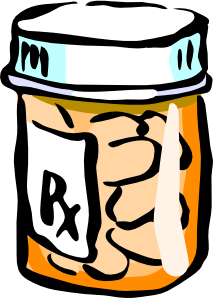Keeping your cat contained may be the best way to prevent diseases - for them and for you. But this is often impractical. For example, I have a male tabby that loves to be outdoors during the day, especially when it's warm, and he'll often ask to go out for a short time in the late evenings. When I see him in my yard he's creeping between bushes, stalking bugs, feeling cocky climbing three feet up a fruit tree, and chasing shadows. Basically, he's having a ton of cat fun and I would be doing him a disservice by keeping him indoors. Especially when I know exploring the yard makes his life that much happier and provides exercise he wouldn't otherwise get.
But what about when he's out mousing?
Cats are natural mousers. They may hunt birds, too, but the majority of their scouting is for mice/rats. I recently had an extermination company come and clean up a mess previous owners did not tend to. The attic had a large rodent infestation that led to damage, feces, and a bad smell when temperatures were warm. In addition - mice and rats were using my attic as a Bed & Breakfast. This was Heaven for the cat, but worrisome to me. What about the poisons they put down? What about diseases the mice/rat may have been hosting? Fleas? Worms? Or what if he chokes or is bitten?
Being bitten by any wild animal could be a cause for
Rabies in your pet. Most companion animals receive this vaccination early on and vet clinics are usually good about sending reminder cards. And county animal control will usually have a registration and send you a pet tag that states the date. Vaccinating for rabies should be first on the list for outdoor cat owners. Be sure you're familiar with what the symptoms look like: anxiousness, hiding away from you, a fever, irritability to aggression, and in the late and fatal stages - paralysis.
Tapeworms can spread and infect you or other pets in the home. Mice/rats are known carries of tapeworms, which stem from fleas ingested at particular life stages in their cycle. The rodent then becomes a host. Eating the mouse/rat or a part of it that has tapeworm, or an infected flea, can lead to a tapeworm infestation in your pet. It may take a while for symptoms to show up, but be on the lookout for bloated belly, weight loss, and the telltale sign - small rice grain looking eggs on your cat's anus or on the bedding it usually sleeps on. Treatment is fairly easy - dewormers are given at the vet. There are also some over the counter medications you can use at home.
Leptospira is another concern for cat owners. It's a bacterial infection that enters through the skin and travels all over the system - kidneys, liver, eyes, brain, etc. The degree of severity depends on how sturdy your cat's immune system is. Antibiotics and possible hospitalization are the usual treatment methods. But note, Leptospira is a
zoonotic disease. Meaning, it can travel from cat to human, or to other pets in the home! Careful handling of the cat is important if you are fairly certain this is what's ailing him. Your vet will probably recommend scanning the home and yard, sheds, and garages for rodent urine stains or feces to help determine if you have an infestation issue that needs to be addressed, too.
A less concerning disease that may be passed from birds to cats, then onto other animals (even you) is the
Bird Flu H5N1. It's rare, but there have been cases in some areas of the world. You would need to be aware of any outbreaks in your area. You can usually find this information on the
CDC's web site. There's no guaranteed way to prevent this risk other than becoming an indoor-only cat. There are some precautions you can take. Know where your cat roams. Is it just the neighbors, or does she travel a block and mingle with multiple other cats along the way? Keep the sleeping area clean. Bleach things when laundered and be sure to wash the food & water bowls regularly. Symptoms mimic that of other common feline respiratory infections: a runny nose, watery eyes, and wheezing when breathing. If you have a notion that H5N1 is prevalent in your area, and your cat shows these symptoms, it's best to consult a vet. If it's not H5N1, it could still be an infection that's easily treated sooner than later.
.jpg)


































